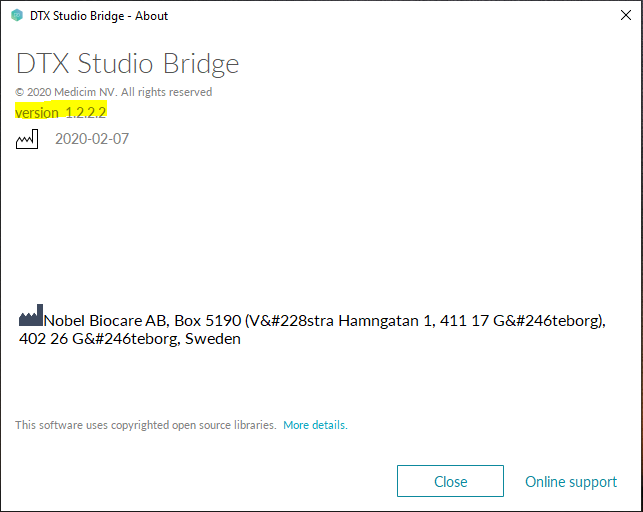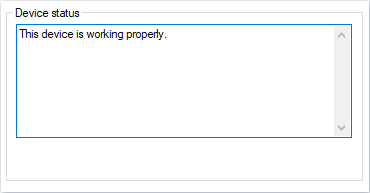

Dentrix Imaging supports acquiring intraoral images from the DEXIS CariVu camera on computers running the Windows operating system.
Notes:
· Before installing the DEXIS CariVu camera, you must configure the acquisition agent application on each computer that you use to acquire images.
· This guide was last updated: 6/12/2025
· Acquisition agent v1.2.7354.26702
· DTX Studio Bridge v1.2.2.2
Before acquiring images, you must install the CariVu camera drivers.
To install the CariVu camera drivers
1. Connect the CariVu camera to a USB port on the computer.
Notes:
· Windows detects the device and uses the drivers included with DTX Studio Bridge.
· DTX Studio does not officially support Windows 7.
2. In the system tray, click the DTX Studio Bridge icon.
The DTX Studio Bridge dialog box appears.
![]()

3. If the CariVu camera appears with a green dot, it is ready for use with Dentrix Imaging; otherwise, refer to Troubleshooting.
Note: You can connect only one camera at a time.
The CariVu camera is now functional and ready to acquire images.
To acquire a test image
1. In the Imaging Procedures list, click 2D Oral/Facial Photo Images.

2. In the Acquisition method for this imaging exam menu, click DEXIS CariVu, and then click Proceed with Acquisition.
Note: Only one camera can be connected at a time.

A separate live video stream window opens.

Note: The DTX Studio Bridge capture window may not come to front. If this happens check the computer's taskbar for the DTX Studio Bridge icon.
![]()
3. Press the camera's capture button as needed to capture images.
4. When you have finished capturing images, click Finish acquisition.
All of the captures images appear in the snapshot panel.
5. On the snapshot panel, clear the check box of the snapshots that you do not want to save.

6. Click Assign Images.
7. Do any of the following:
· To save one or more snapshots as intraoral images and assign tooth numbers, select the snapshots that pertain to the same teeth (deselect snapshots that do not pertain to the same teeth), and then drag them to the Select Teeth, UR/UL/LR/LL, Upper Jaw, or Lower Jaw box.

· To save one or more snapshots as extraoral images, select the snapshots that are extraoral images (deselect snapshots that are not extraoral images), and then drag them to the Extraoral Photos box.

· To save the snapshots on the snapshot panel as intraoral images, but not assign tooth numbers, leave those snapshots on the snapshot panel.

Assigned intraoral images appear on the left side of the preview area; extraoral on the right.

Note: If you have a mix of intraoral and extraoral images, they map to one procedure (D0350), which will appear in the progress notes with two icons. Also, you can delete or reassign the intraoral or extraoral exam as needed in the future.
8. Click Begin Uploading.
Note: You can connect only one camera at a time.
If this is the first time DTX Studio Bridge is being used on this computer, try restarting the computer and then trying again.
To view the version of the acquisition agent that you are using, right-click the Acquisition Agent icon in the system tray, and then select Preferences. The version number appears; make sure that it meets or exceeds the minimum version number listed in the "Minimum Versions" section.


To view the version of DTX Studio Bridge that you are using, click the DTX Studio Bridge icon in the system tray, click the gear icon, and then select About. The version number appears; make sure that it meets or exceeds the minimum version number listed in the "Minimum Versions" section.


Confirm that the camera device driver is loaded and recognized by Windows.
To confirm that the camera device driver is loaded and recognized by Windows
1. Connect the camera to a USB port.
2. Open Device Manager.
3. Expand the Imaging devices category, and make sure that the DEXIS CariVu camera is listed.

4. Verify that the camera is working properly.

